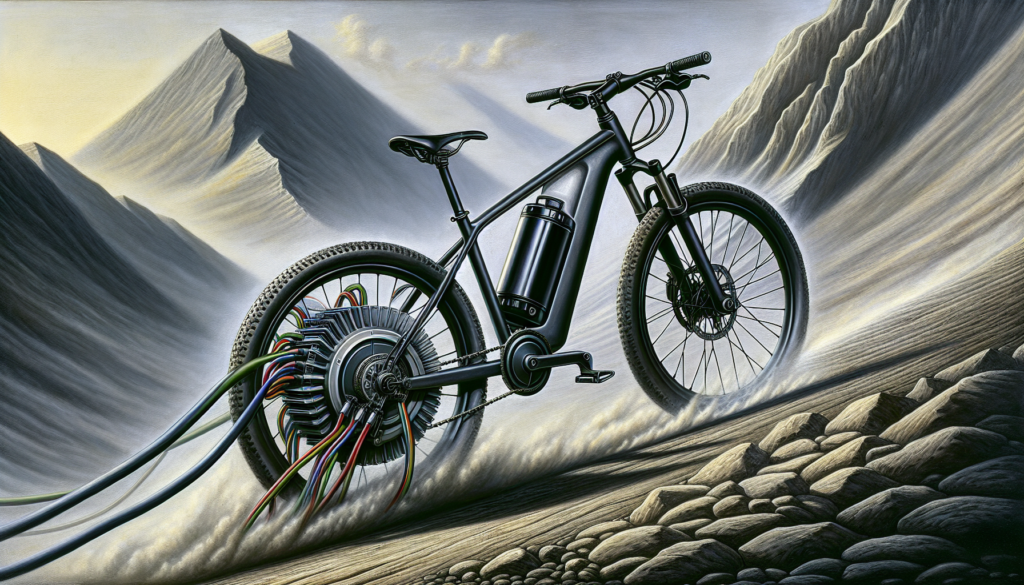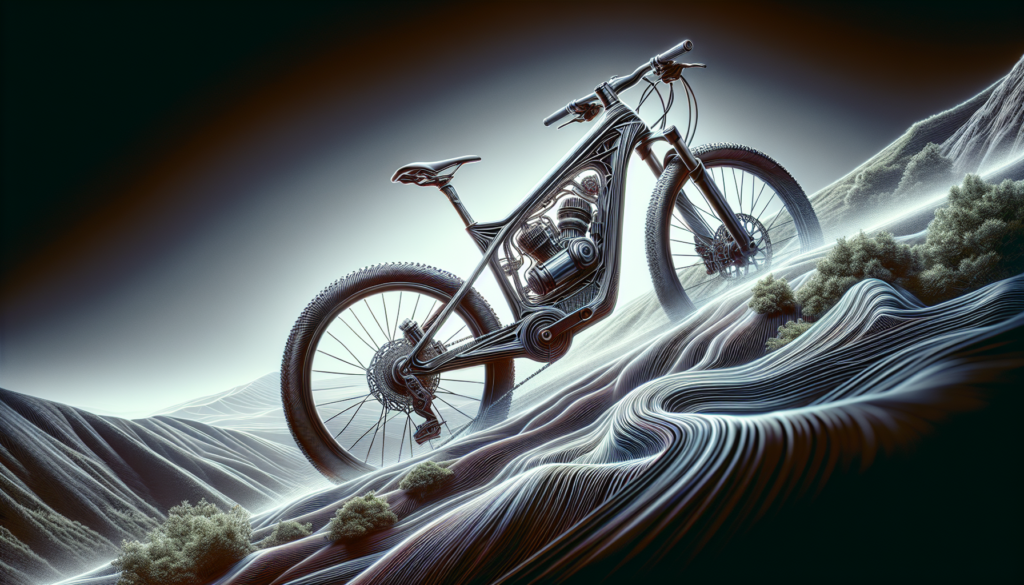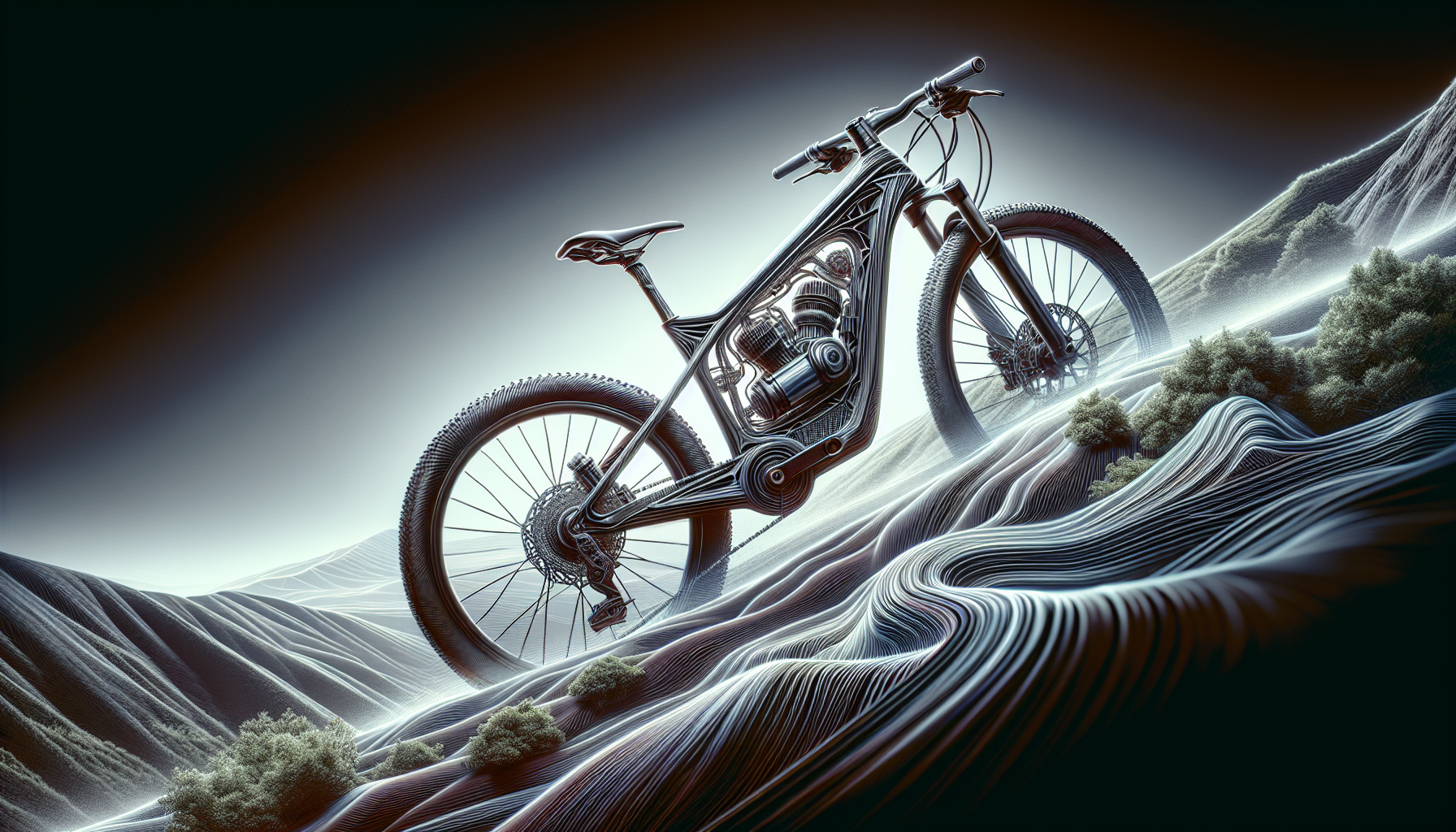Have you ever wondered how e-bike motors handle steep hills? Well, you’re in luck because we’re about to take you on an exhilarating ride through the world of e-bike technology! When it comes to conquering those challenging slopes, e-bike motors have some ingenious mechanisms in place that ensure a smooth and effortless ascent. From powerful torque sensors to intelligent power management systems, these motors are designed to make uphill climbs feel like a breeze. So sit back, grab your helmet, and get ready to discover the secrets behind the impressive hill-climbing capabilities of e-bike motors!

Types of E-bike Motors
When it comes to e-bike motors, there are three main types to consider: hub motors, mid-drive motors, and all-in-one motors. Each type has its own advantages and disadvantages, which can impact the performance of the e-bike, especially when it comes to tackling steep hills.
Hub Motors
Hub motors are the most common type of e-bike motor and are typically located in either the front or rear wheel hub. There are two subtypes of hub motors: direct drive hub motors and geared hub motors.
Direct Drive Hub Motors
Direct drive hub motors are known for their simplicity and durability. They have fewer moving parts, which means less maintenance and a longer lifespan. These motors offer a powerful and smooth ride, making them a popular choice for e-bike riders.
Geared Hub Motors
Geared hub motors, on the other hand, use gears inside the motor to increase torque and power. This makes them more suitable for hill climbing, as they provide extra assistance when you need it most. However, they can be louder and require more maintenance compared to direct drive hub motors.
Mid-drive Motors
Mid-drive motors are located in the center of the e-bike, near the cranks. They utilize the bicycle’s gears to provide a more natural riding experience. This type of motor is often favored by more serious or experienced riders.
Location and Design
The location and design of mid-drive motors allow for better weight distribution, which improves the bike’s stability and handling on steep hills. By placing the motor in the center, the bike feels more balanced, making it easier to control when climbing or descending.
Gear Reduction
An advantage of mid-drive motors is their ability to utilize the bicycle’s gears. This allows for a wider range of gears to choose from, making it easier to find the perfect gear ratio for tackling hills. The motor can also assist in shifting gears, making uphill climbs more manageable.
Torque Sensing
Mid-drive motors often come with torque sensors, which detect how hard you are pedaling and adjust the motor’s assistance accordingly. This results in a more efficient use of power, as the motor helps when you need it most, such as when tackling steep hills.
All-in-one Motors
All-in-one motors combine the motor, battery, and controller into a single unit, resulting in a sleeker, more integrated design. These motors are often seen on smaller and more compact e-bikes, but they may not be as suitable for climbing steep hills as hub or mid-drive motors.
Integrated Design
The integrated design of all-in-one motors provides a tidy and streamlined look. The motor is usually located in the rear wheel hub, and the battery is built into the frame or attached near the motor. This design makes the e-bike look more like a traditional bicycle.
Motor Placement
The placement of the motor in the rear wheel hub can affect the weight distribution of the e-bike. If the motor is too heavy or not positioned correctly, it can result in an unbalanced ride, particularly when climbing steep hills. Therefore, it’s crucial to ensure proper motor placement for optimal performance.
Factors Affecting E-bike Performance on Hills
There are several factors that can affect an e-bike’s performance when tackling hills. Understanding these factors can help you choose the right e-bike motor and configuration for your needs.
Motor Power
The power of the motor is a critical factor when it comes to climbing steep hills. Higher wattage motors provide more assistance, allowing you to conquer steeper gradients with ease. However, it’s important to note that more powerful motors may drain the battery faster.
Torque
Torque is another crucial factor when it comes to hill climbing. Torque is the force that the motor applies to the pedals, and a higher torque rating means more assistance when you need it most. E-bikes with higher torque motors will have an easier time tackling steep inclines.
Battery Capacity
The capacity of the e-bike’s battery directly impacts its range and ability to tackle hills. A larger capacity battery will provide more power for longer durations, allowing you to conquer multiple hills on a single charge. It’s important to consider the battery capacity when selecting an e-bike for hilly terrain.
Weight and Load
The weight of the e-bike, including both the rider and any additional cargo, can impact its performance on hills. Heavier e-bikes require more power to climb, and excess weight can strain the motor and reduce battery life. It’s essential to consider the weight and load capacity of the e-bike when planning to ride on hilly terrain.
Rider’s Pedaling Input
The rider’s pedaling input plays a significant role in e-bike performance on hills. E-bikes often come with different levels of pedal assist, which determine how much power the motor provides in relation to the rider’s pedaling effort. Choosing the appropriate level of assist can make a difference in how easily you conquer hills.
Advantages of Hub Motors on Hills
Hub motors, both direct drive and geared, offer several advantages for tackling hills. These advantages make them a popular choice among e-bike riders who frequently encounter challenging terrain.
Higher Torque
Hub motors, especially geared hub motors, provide higher torque compared to other types of e-bike motors. This means greater assistance when tackling steep hills. The extra torque helps the motor overcome the resistance caused by the incline, making the climb easier and more manageable.
No Gear Shifting Required
One of the main advantages of hub motors is that they eliminate the need for gear shifting during hill climbs. Unlike mid-drive motors, which rely on the bicycle’s gears, hub motors provide direct power to the wheel. This means you can focus on pedaling and let the motor do the work, making for a simpler and less distracting experience.
Better Heat Dissipation
Hub motors are known for their excellent heat dissipation capabilities. This is especially important when climbing hills, as the motor can generate excess heat due to the increased workload. Hub motors are designed to handle this extra heat, ensuring optimal performance even during prolonged hill climbs.
Disadvantages of Hub Motors on Hills
While hub motors offer many advantages, there are also some disadvantages to consider when it comes to tackling hills.
Limited Gear Range
One drawback of hub motors is their limited gear range. Since they don’t rely on the bicycle’s gears, hub motors can have a narrower range of available gears. This can be a disadvantage when it comes to finding the right gear ratio for various terrain, particularly on steep hills.
Heavier Weight
Hub motors, especially direct drive hub motors, can add significant weight to the e-bike. This extra weight can make the e-bike feel sluggish and less maneuverable, especially when climbing hills. The additional weight can also impact the overall efficiency and range of the e-bike.
Lower Pedal Assist Efficiency
Hub motors, due to their direct power delivery, can offer lower pedal assist efficiency compared to mid-drive motors. When climbing hills, the rider’s pedaling input may not be as effectively utilized by the motor. This can result in less efficient power transfer and potentially shorter battery life.

Advantages of Mid-drive Motors on Hills
Mid-drive motors offer several advantages when it comes to tackling hills, making them a popular choice among riders who frequently encounter steep terrain.
Better Weight Distribution
One of the significant advantages of mid-drive motors on hills is the improved weight distribution. By placing the motor in the center of the e-bike, near the cranks, the weight is more evenly distributed. This results in better balance and handling, making it easier to tackle hills and maintain control.
Utilize Bicycle Gears
Mid-drive motors leverage the bicycle’s gears, which allows for a wider range of gear options. This is particularly beneficial on hills, as the rider can choose a lower gear to increase torque and power, making uphill climbs more manageable. With the ability to utilize the full range of gears, mid-drive motors offer greater flexibility for tackling various gradients.
Efficient Pedal Assist
Mid-drive motors often come equipped with torque sensors that detect the rider’s pedaling effort. This feature allows the motor to provide assistance in proportion to the rider’s input. As a result, the pedal assist is more efficient, with the motor delivering power when it’s needed and reducing assistance when it’s not. This not only increases the range of the e-bike but also provides a more natural and intuitive riding experience.
Disadvantages of Mid-drive Motors on Hills
While mid-drive motors offer significant advantages when it comes to hill climbs, there are also a few drawbacks to consider.
Higher Cost
One disadvantage of mid-drive motors is the higher cost compared to other types of e-bike motors. The technology and design of mid-drive motors make them more expensive to manufacture, which can increase the overall price of an e-bike. However, many riders find the benefits of a mid-drive motor on hills outweigh the higher cost.
Increased Wear on Drivetrain
Mid-drive motors operate by driving power through the bicycle’s drivetrain, which consists of the chain, cassette, and derailleur. This additional force can result in increased wear and tear on these components, particularly when climbing hills. Regular maintenance and occasional replacement of drivetrain components may be required to maintain optimal performance.
Complex Maintenance
Mid-drive motors can be more complex to maintain compared to hub motors. Due to their location and integration with the drivetrain, servicing and repairing mid-drive motors may require specialized knowledge and tools. This can make maintenance more challenging and potentially more costly.
All-in-one Motors
All-in-one motors, also known as integrated motors, combine the motor, battery, and controller into a single unit. This design results in a sleek and streamlined look, making them a popular choice among riders who prioritize aesthetics.
Integrated Design
The integrated design of all-in-one motors offers a clean and seamless appearance. The motor is typically located in the rear wheel hub, while the battery is either built into the frame or attached near the motor. This design makes the e-bike look more like a traditional bicycle and may be preferred by riders who don’t want the motor to be immediately visible.
Motor Placement
The placement of the motor in the rear wheel hub can impact the performance of the e-bike on hills. If the motor is too small or lacks sufficient power, it may struggle when climbing steep inclines. Additionally, the limited space in the rear wheel hub may restrict the size of the motor, further affecting its power and torque capabilities.
Disadvantages of All-in-one Motors on Hills
While all-in-one motors offer an integrated and sleek design, there are some disadvantages to consider when it comes to tackling hills.
Limited Power and Torque
All-in-one motors, due to their compact size and integrated design, may offer limited power and torque compared to hub or mid-drive motors. This can result in reduced performance on steep hills, where additional assistance is often required. It’s essential to assess the power and torque capabilities of all-in-one motors before using them on hilly terrain.
Restricted Battery Size
The integrated design of all-in-one motors often limits the capacity and size of the battery. Smaller batteries may not provide sufficient power for tackling long or steep hill climbs, requiring more frequent recharging. It’s important to consider the battery size and capacity when choosing an all-in-one motor for hilly terrain.
In conclusion, the type of e-bike motor you choose can significantly impact its performance on hills. Hub motors, such as direct drive and geared hub motors, offer higher torque and no gear shifting requirements, making them suitable for tackling hills. However, they can be heavier and have lower pedal assist efficiency.
Mid-drive motors provide better weight distribution, utilize bicycle gears, and offer efficient pedal assist. They may have a higher cost and require complex maintenance, but many riders find their advantages worthwhile, especially when it comes to climbing hills.
All-in-one motors offer an integrated design and clean look but may have limited power, torque, and battery size. They may not be as suitable for hilly terrain compared to hub or mid-drive motors.
Consider factors such as motor power, torque, battery capacity, weight and load, and the rider’s pedaling input when selecting an e-bike motor for tackling hills. It’s essential to choose a motor that suits your specific needs and terrain requirements to ensure an enjoyable and efficient riding experience.

